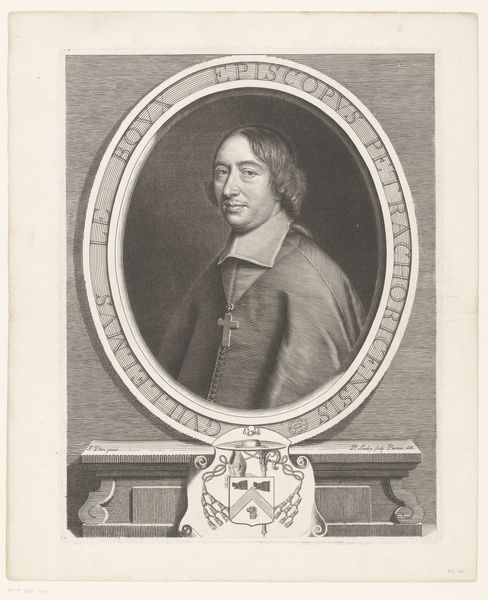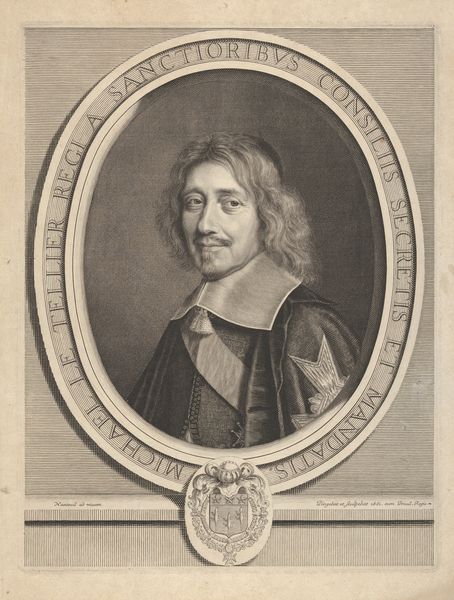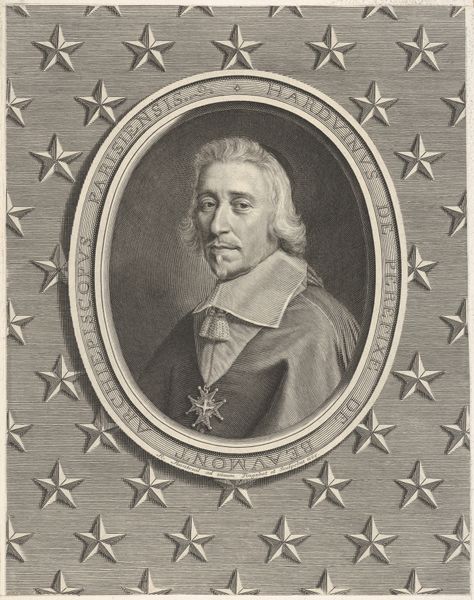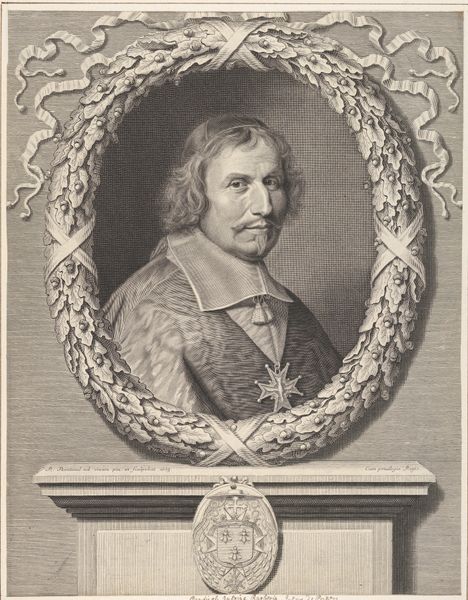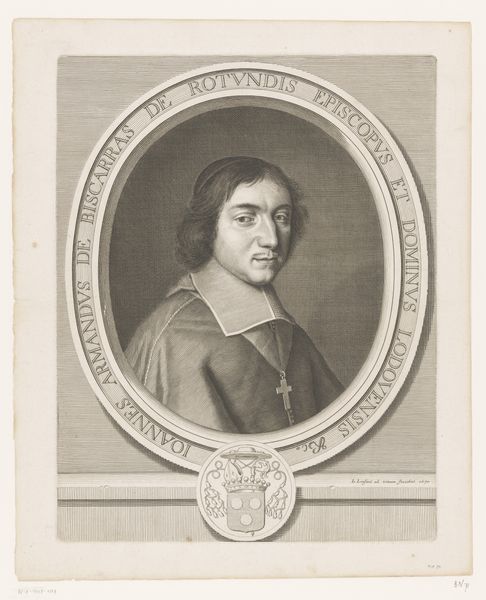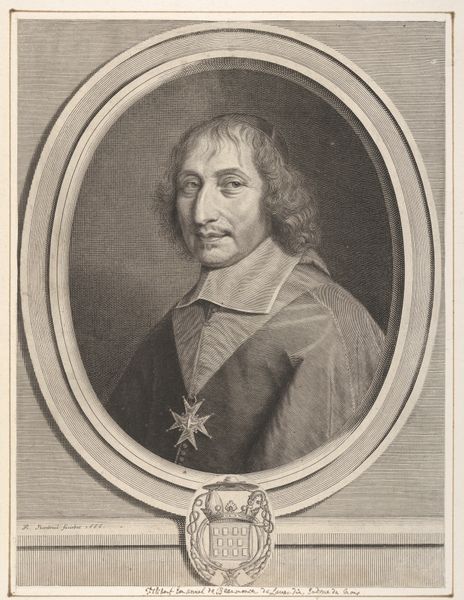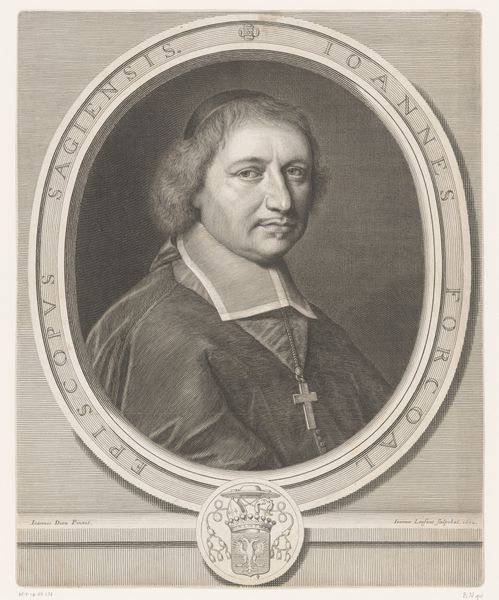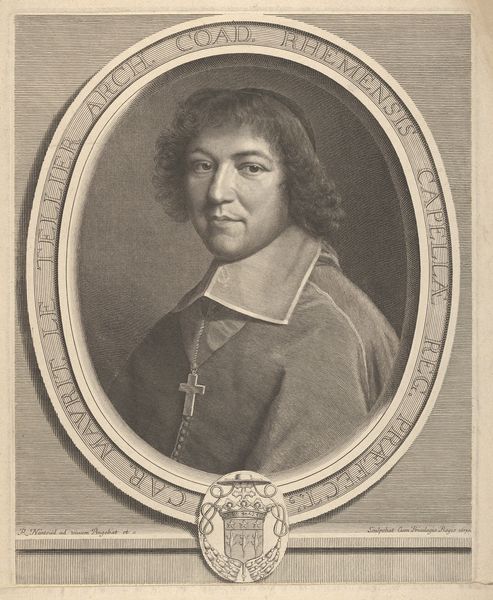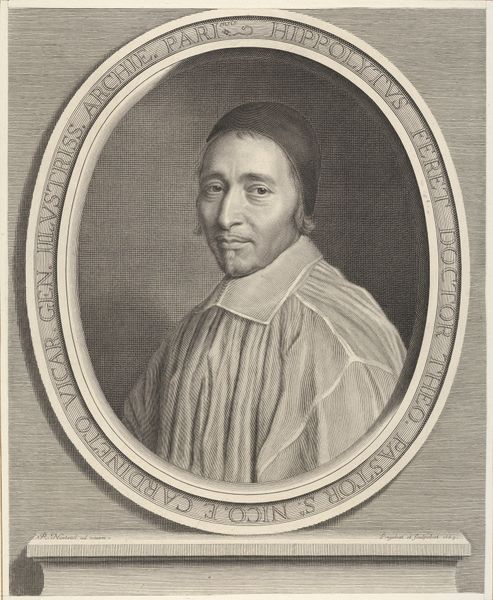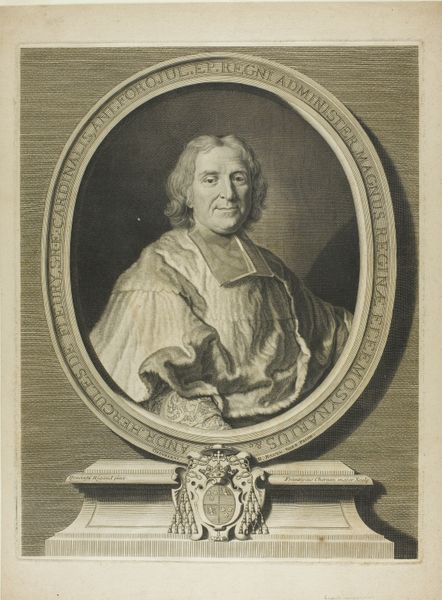
drawing, print
#
portrait
#
drawing
#
baroque
# print
#
portrait reference
Dimensions: sheet: 12 5/8 x 9 15/16 in. (32 x 25.3 cm)
Copyright: Public Domain
Curator: Gazing at us from within this oval frame is François de Nesmond, captured in 1663 by Robert Nanteuil. It's a baroque print, currently housed at the Metropolitan Museum of Art. What strikes you most about it? Editor: There's a certain subdued intensity. The sitter’s eyes seem to hold a weight of responsibility, perhaps indicative of the era's rigid social hierarchies and the Church's significant power. The muted tones contribute to this feeling; it’s almost like a study in contrasts. Curator: I find the line work utterly captivating! The texture Nanteuil achieves is almost painterly despite it being a print. You can almost feel the fabric of his robes and see the light reflecting in his eyes. There's something incredibly alive about it. Editor: Absolutely, but that "aliveness" is carefully constructed, right? These portraits served a function. They affirmed status, solidified power dynamics. De Nesmond's attire, the symbols of his office—they all speak to an elaborate performance of identity within the confines of 17th-century France. Curator: A performance indeed! But maybe Nanteuil, through his incredible skill, allowed some humanity to peek through? There is this realness that goes beyond status. Look how he depicts the slight unevenness in the set of Nesmond’s mouth, the fine wrinkles around his eyes. Moments like that suggest an effort to move beyond a pure status representation. Editor: Possibly, but those touches could also enhance the overall "noble" image! Subtleties can reinforce rather than undermine established narratives. How much does art actually transgress or only nuance hegemonic identities? That’s always the central question in these Baroque representations of power. Curator: It's a delightful and endless pondering. Art always navigates the complex play of transgression and adherence. Anyway, Nanteuil's depiction of light is amazing and the subtle modeling certainly amplifies the volume and textures—making it ever so appealing. Editor: Agreed, and by understanding the complexities that visual language attempts to communicate, we can think critically about the enduring relevance of art for how people perceive and experience life. Curator: Absolutely. And to step back and admire the beautiful intricacy in such artwork.
Comments
No comments
Be the first to comment and join the conversation on the ultimate creative platform.
